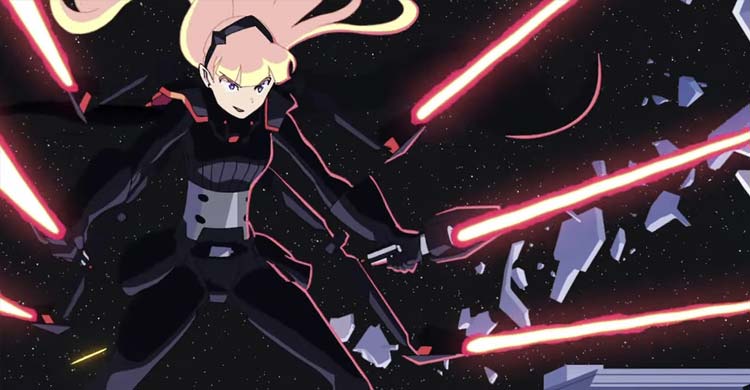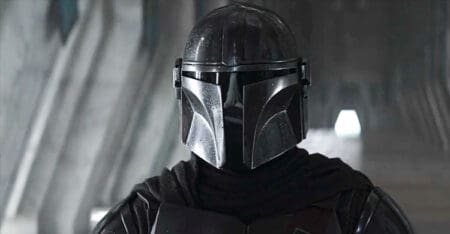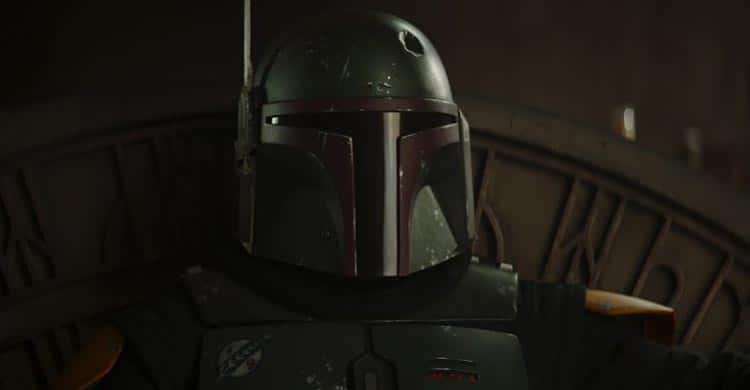Visions may be one of the best things to come out of Disney’s developments in Star Wars. It takes all the excitement of the Star Wars universe and gives it an anime glaze. New stories are explored and new characters are followed.
In many ways, there’s sublimeness to the cyclical nature. Star Wars was initially inspired by Japanese samurai movies, most notably The Hidden Fortress. Now the Japanese influence takes over in a much bigger and fitting way.
Star Wars Samurai
The best episode of Star Wars: Visions is by far the first, The Duel. It’s the classic stranger-comes-to-town story amid a Feudal style village. A wandering Ronin passes through with his droid pal.
The village comes under attack by the Empire with a Sith lord. It’s the perfect time for the silent warrior to reveal his Jedi nature. The lightsaber comes out and a stunning duel takes place.
Takanobu Mizuno directs this entry with popping visuals. The characters appear in dark and sketchy drawings of black and white. The sights of lightsabers and tech are the only bursts of color and they really leave an impact.
More Than Just An Adventure
It’s a bit of a letdown that a handful of the shorts are fairly standard Star Wars stories. They mostly involve Jedis combatting the Empire and/or Sith, usually stumbling across the black knights. Thankfully, there are a few that feel like more than the usual adventure.
The second episode of Star Wars: Visions, Tatooine Rhapsody, is a great example. This story doesn’t follow underdog warriors but a traveling band. They rock around the galaxy while trying to stay true to their bandmates.
The art style is also remarkably different. The characters are squat yet colorful. The music they play is pleasing enough that even Jabba The Hutt wags his tail to the beat.
More Mystery
Some stories have some genuine surprises to them. A highlight of those types of stories is Star Wars: Visions episode 5, The Ninth Jedi. The story concerns a batch of Jedis who are invited to a temple to receive lightsabers.
When they arrive, however, we learn that this invitation was more of a trap. But that trap was actually meant to defeat the Sith. It’s a constantly shifting tale that keeps you guessing.
Star Wars: Visions episode 9, Akakiri, also manages to feature some cunning twists. Without revealing too much, it’s a story about sacrifice and trying to master Sith-style resurrection. It’s a story that’s bound by passion and heartbreak, accompanied by remarkably surreal visuals.
Familiar Stagings
A few of the shorts mostly feel like familiar anime given a Star Wars theme. This is most obvious in Star Wars: Visions episode 6, T0-B1. It tells the story of a boy droid desiring to become a Jedi while being raised by his kind scientist of a big-nosed father.
If you haven’t caught the reference, this is the same story as Astro Boy. Even the cute and playful visuals replicate that Astro Boy style. This doesn’t make the short terrible it’s just that there’s little to make one see this as anything more than Astro Boy within the Star Wars universe.
Another example of this comes from Star Wars: Visions episode 3, The Twins. Animated by Studio Trigger, this tale of Jedi twins feuding amid Star Destroyers feels very much like Trigger’s work on Kill la Kill. It’s not as obvious but the influence is clear.
The Anime Influence
Honestly, the weaker shorts are the ones that settle too easily into simple anime stories. Star Wars: Visions episode 4, The Village Bride, is merely a tale of a village defending itself from the Empire. Staging this event around a wedding does little to breathe some extra life into this by-the-number short.
Star Wars: Visions episode 7, The Elder, is also a familiar story of master and student. It’s a solidly written episode but the art style by Studio Trigger feels a bit too mundane. It exists somewhere between a run-of-the-mill anime and an okay episode of The Clone Wars.
A bit of a wild card is Star Wars: Visions episode 8, Lop and Ochō. This short looks cute with a cat-like creature forming a bond with a new family. The dark turn it takes, however, is rather surprising for how heartfelt it becomes with the tragedy that unfolds.
For the most part, this anthology is a fantastic project.
Not all the shorts work but the ones that do are some of the most experimental of Star Wars tales. It’s not bound by lore and dares to pose new ideas. The stories all don’t feel the same and the jump in art styles makes every entry refreshing.
There’s something present here that isn’t in other Star Wars media. There’s a toying with the franchise rather than adhering strictly towards its many stories and characters. If the previous Star Wars pictures and TV series felt stuck in a rut, Visions is a breath of fresh air.
Star Wars: Visions is currently playing on Disney+.





